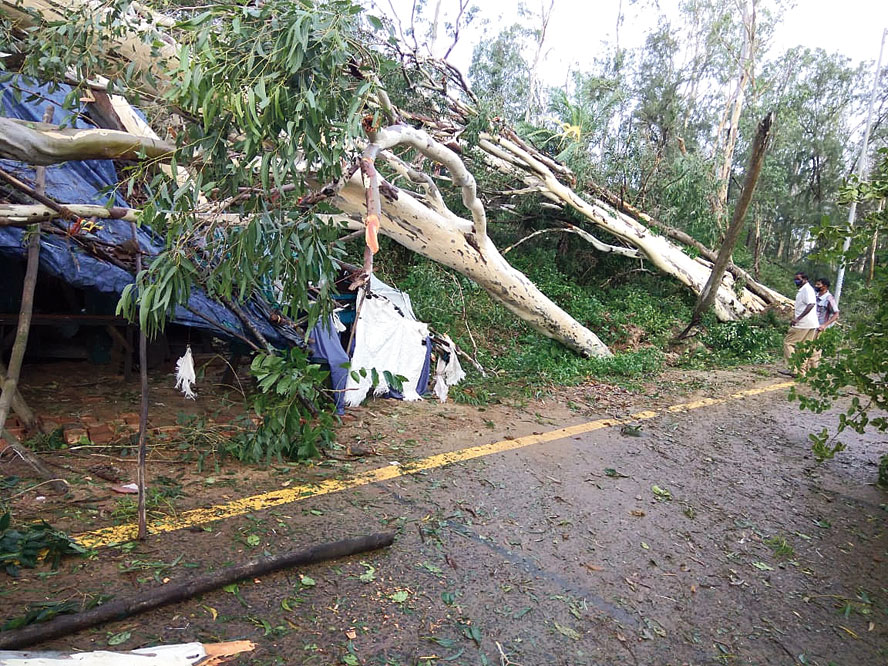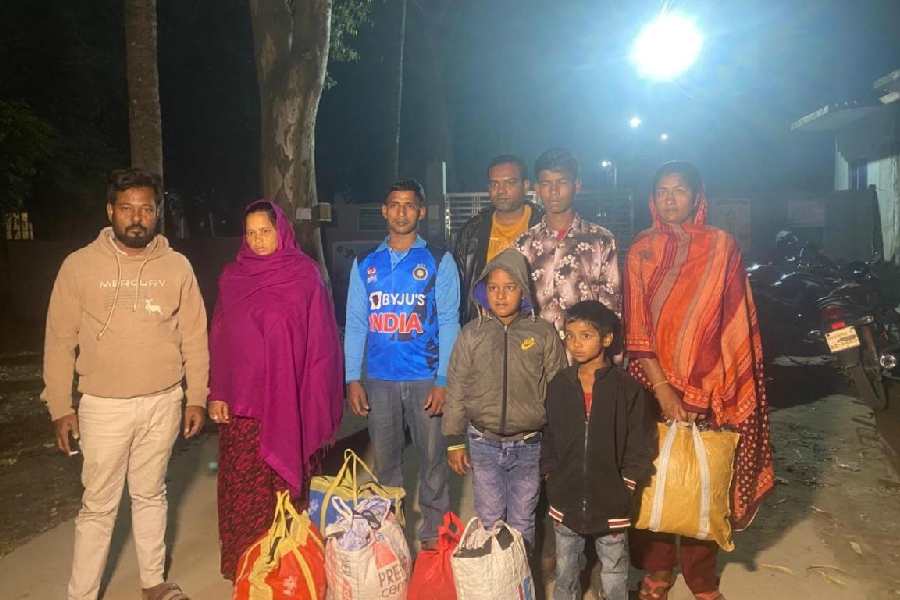Muhammad Sahid Ali’s heart was beating when he went to his farm to assess the impact of Cyclone Amphan on Thursday morning.
The middle-aged farmer’s both poly houses — large covered structures inside which vegetables are grown in a controlled temperature — were lying uprooted.
“I was worried about the fate of poly houses, but didn’t expect them to be uprooted like this as these structures are fixed to iron beams cemented at least a foot beneath the soil. But the cyclone was too strong to cause such a damage,” said Ali, a resident of Bhangar in the southern fringes of Calcutta.
Sahid had spent Rs 15 lakh — half of which came as government grant — on the two poly houses, one of which was spread over 10,00 square metre. The other poly house has a vastness of 500 square metre.
“I would need to spend at least Rs 2 lakh to repair the smaller poly house. The larger one has been razed to the ground,” Sahid said.
Initial estimates suggested that over 3,360 hectares of crops had been destroyed in the storm in Bhangar 2 block in South 24-Parganas.
Sahid is one of the thousands of farmers in the southern districts of Bengal, who are staring at difficult days ahead as the super cyclone has dealt a heavy blow to their livelihood.
Even amidst stringent lockdown laws, farmers in Bhangar — most of them own around half a hectare of land each — had learnt to cope with the new rules of the game as they were selling their produce either in the local market or to the state government’s agricultural marketing department.
“It is true that the prices were low. But we were able to make ends meet with whatever we earned. What will we sell now that all the crop has been destroyed?” asks Muhammad Saheb Ali Mullah, another middle-aged farmer.
This correspondent visited Bhangar on Friday to find hectares of vegetables, primarily cauliflower, decaying under the sun.
According to the farmers, this is the season for cauliflowers and almost all fields were ready for the harvest. There were also small patches of land with chillies and lemons.
“None of these vegetables are sellable anymore,” said Abdur Sattar Mullah, a farmer and a local member.
According to him, he had spent around Rs 10,000 to cultivate around 0.13 hectares of cauliflower. “The crop was good this season, I would have made a five-fold profit,” Sattar said.
The losses engendered by Amphan, several farmers said, would have a long-term impact as the practice in the area was to use the money from the sale of one crop as the capital for the next season.
“The next season is of spinach, which is also a capital-intensive crop. Farmers need to construct poly tunnels to ensure better quality of crops,” said Sahid, explaining that poly tunnels are smaller versions of a poly house.
With the devastation, the farmers think vegetable markets in and around Calcutta will feel the pinch soon.
A local farm producer organisation, the Bhangar Vegetable Producer Co. Ltd, procures vegetables from 1,750 farmers of the area and sells it through various shops operating under the state government.
Sahid, one of such farmers, says the supply will fall short of demand from Saturday onwards. Most of the 55 stalls run by the state in and around Calcutta to which the company supplies its produce were closed on Friday.
Yet, the demand was of around 12 tonnes, of which only eight tonnes could be supplied.
“From tomorrow (Saturday), the demand will shoot up to 18 to 20 tonnes a day. How will we manage the supply with most crops destroyed?” Sahid asked.
For answers to these questions, the farmers look up to Sattar, who is for them the immediate link to the administration. However, Sattar pleaded helplessness and said: “This year’s Id is ruined.”
Asish Banerjee, the minister for agriculture, told The Telegraph that the losses were still being estimated.
“The losses are very high in southern districts… We will submit a report to the Chief Minister’s Office very soon,” he said.










